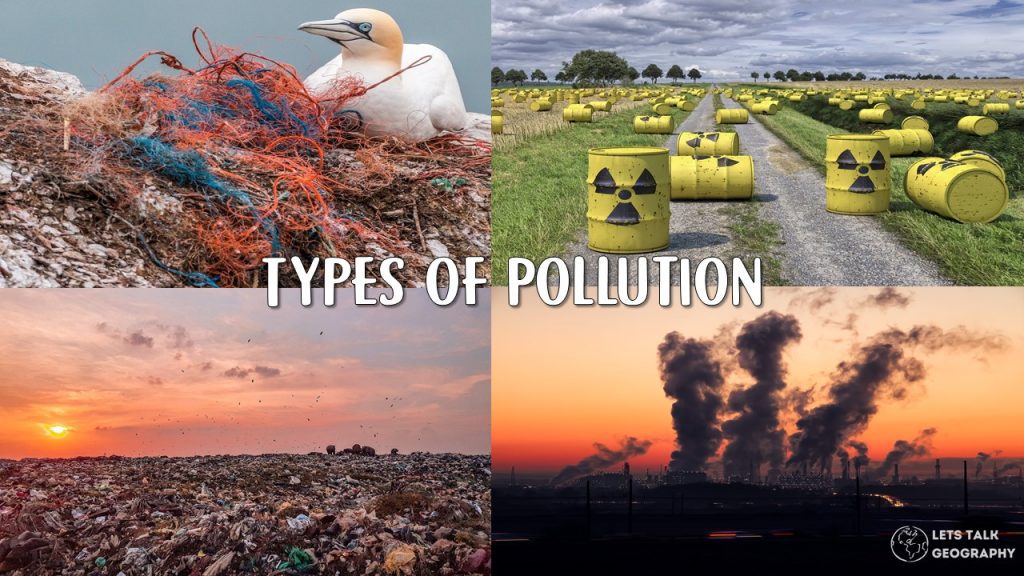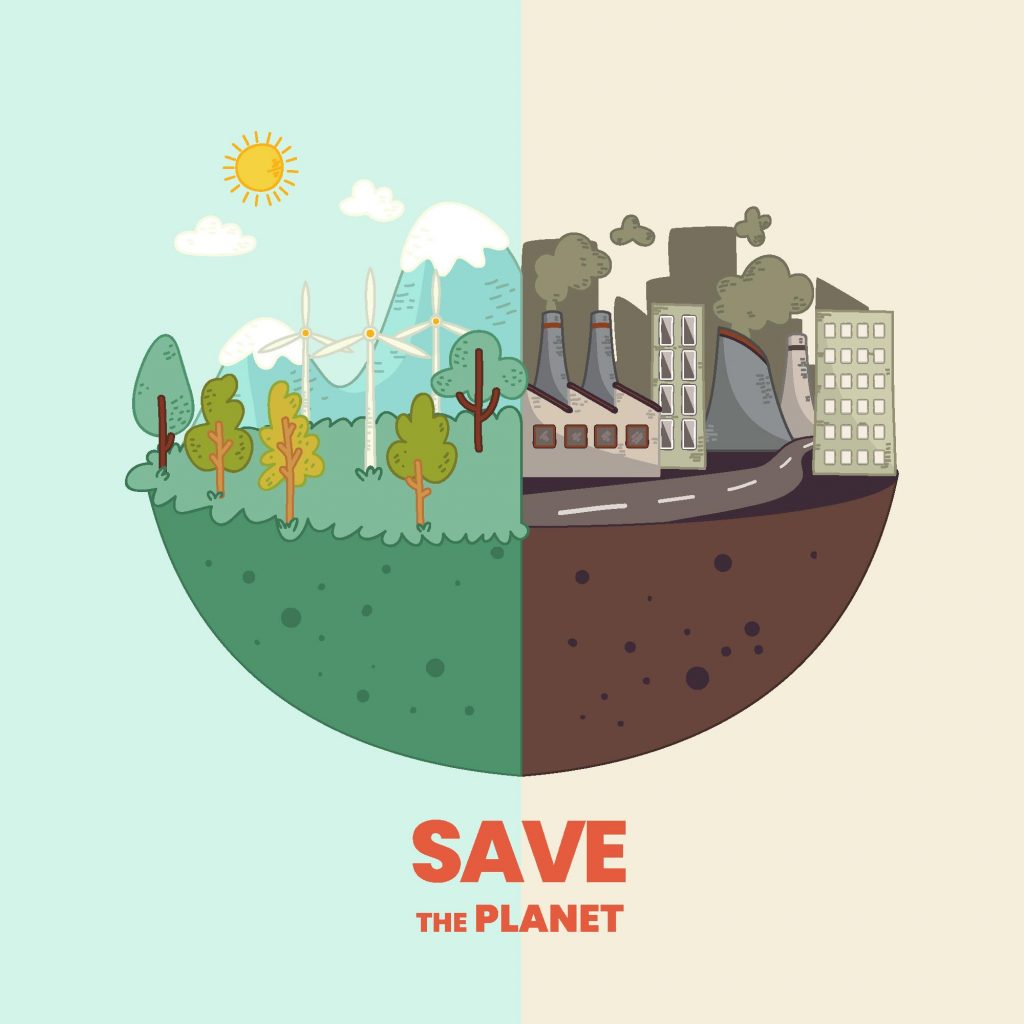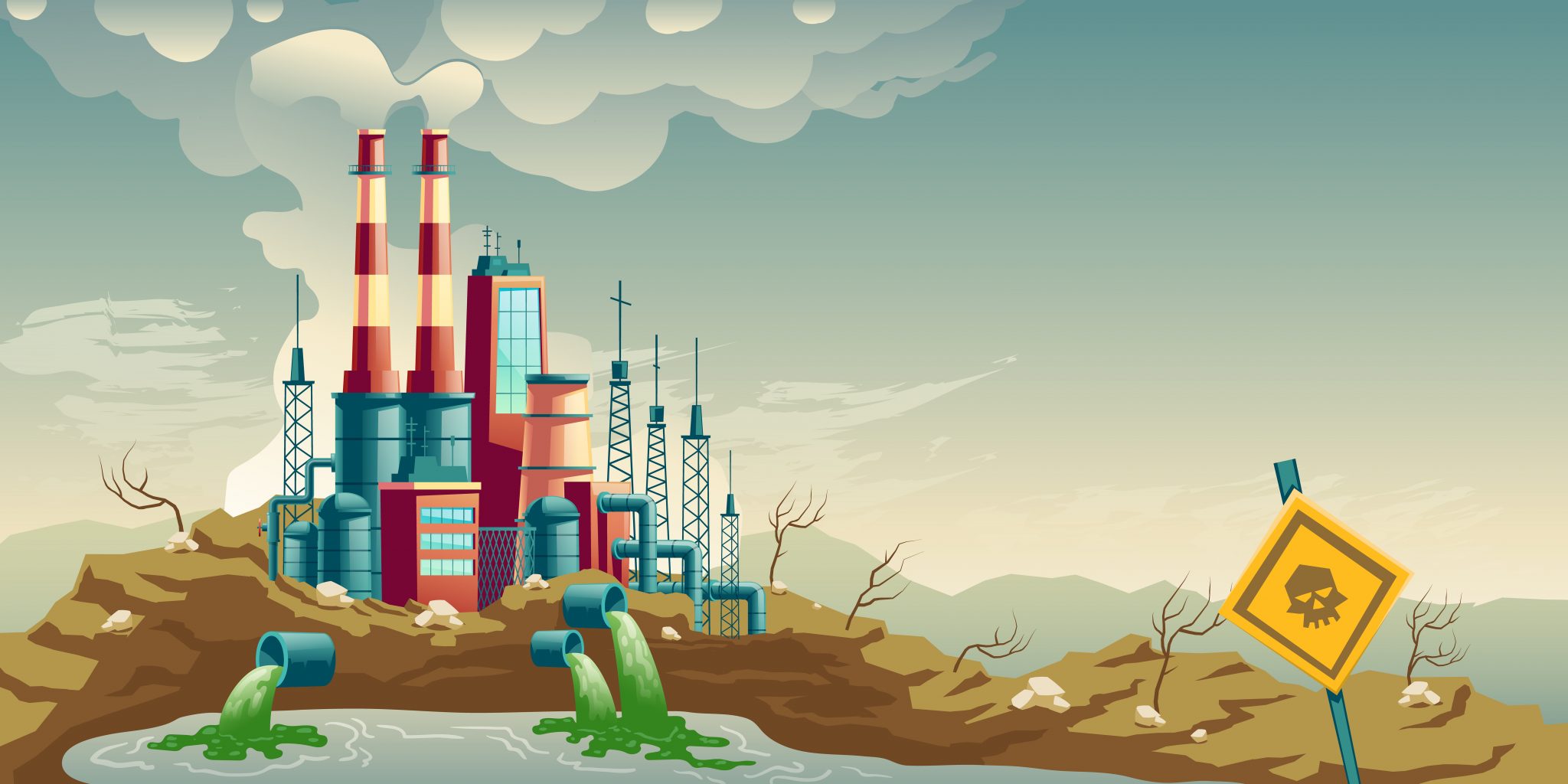What is Environmental Pollution?
Environmental pollution is described as “the contamination of the earth/atmosphere system’s physical and biological components to the point where normal environmental processes are negatively affected.”
Environmental pollution is not a new issue, but it is still the world’s most serious problem and one of the top causes of human disease and mortality. Human activities such as
- urbanisation,
- industrialisation,
- mining
- exploration
All contribute to global environmental degradation. This responsibility is shared by both developed and developing countries, with developed countries doing a better job of environmental preservation due to increased awareness and tighter legislation.
Despite the fact that pollution has garnered widespread attention, the consequences of its severe long-term consequences are still felt.
It is also a barrier to the profitable extraction of coal reserves.
- The standards for environmental protection in developed countries are stricter than in underdeveloped countries.
- As a result, obtaining a license to open mines entails time-consuming procedures that generate delays.
- In addition, authorities have begun to impose strict environmental pollution regulations.
- As a result, environmental problems can be avoided entirely, although such solutions are expensive.
- Some environmental repercussions of mining and processing coal reserves include deforestation, land degradation, water pollution and hydrological damage, air pollution, noise pollution, ground vibration and rock dispersal, and aesthetic impact.
- Because the scope of individual mining operations is expanding as the mining of lower-grade resources expands, environmental repercussions are increasing daily.
- Pollution of soil and water is one of the most serious issues threatening biodiversity, ecosystems, and human health worldwide. Plants use various physiological, biochemical, and molecular processes to combat the harmful effects of environmental contaminants.
●⫸ What are the Pollutants:
Pollutants are numerous contaminants that have entered the environment due to human and natural sources, resulting in pollution. These toxic substances endanger both life and the environment. Pollutants are defined as “waste substances that contaminate the water, air, or soil,” according to the WordWeb Dictionary.
In a developing country like India, applying environmental standards as a decision-making factor must be carefully evaluated. If developed-country criteria are adopted in India, expenses will skyrocket. As a result, the standards chosen should be suitable for the country’s economic status.
According to environmentalists and scientists, there are different types of pollutants, and they are categorized according to the kind of pollution they create. These include water, air, soil, noise, and radioactive contamination. Thermal, plastic, agricultural, and light pollution are other forms.
▶ What are the major outdoor pollutants?
1. Ozone:
- The emissions from a mechanic or a print shop are not only unhealthy to breathe, but they also add to the haze that plagues our cities. Ground-level ozone (sometimes known as “bad” ozone) is produced by a chemical interaction between man-made VOCs and nitrogen oxides in sunlight.
- This helps to explain why ozone levels are higher—and thus more dangerous—during the summer. Ground-level ozone is produced by toxic industrial chemicals and the combustion of fossil fuels.
2. Nitrogen Oxides:
- Another harmful type of urban air pollution is nitrogen oxides, a collection of chemicals that are highly reactive and odorless. When they react in the air, they form particulate matter (PM) and ozone.
- Vehicles, power plants, and other forms of fuel combustion are major contributors to nitrogen oxides.
3. Carbon Monoxide:
Carbon monoxide is a poisonous gas that is colorless and odorless. While it is commonly viewed as an interior issue, it is also a significant source of outdoor pollution.
4. Sulphur dioxide:
- If you ever walk alongside a busy road, a large truck or bus may pass you, enveloping you in a thick cloud of noxious fumes. The sulfur dioxide in that cloud is one of a group of extremely reactive gases known as sulfur oxides, and it comes from burning fuel.
- These gases react in the air to generate particulate matter, which causes smog in high concentrations.
- Fuel combustion from industry, power plants, ships, and heavy equipment vehicles are all significant sources of SO2. Volcanoes are also natural sources of SO2 emissions.
5. Particulate Matter:
- You’ve probably strolled outside your apartment in a metropolis and seen a layer of grey haze that makes it difficult to see the landscape kilometers ahead.
- When excessive levels of particulate matter (PM) are in the air, a haze emerges.PM is a size-categorized mixture of solids or liquid droplets in the air:
- PM10 refers to inhalable particles with a diameter of less than or equal to 10 micrometers. Examples include dust, pollen, and mold.
- PM2.5: Particles with a diameter of less than or equal to 2.5 micrometers. In context, they are about 1/30th of a human hair strand (too small for the human eye to see).
6. Plastic:
- This is one of the most common environmental pollutants and has one of the most severe consequences.
- The phrase “plastic pollution” was coined due to the world’s excess of plastics.
- Plastic is utilized practically everywhere, including to contain and package foods, drinks, and chemicals and as a raw material for various items. More than 60% of all items are produced from plastic.
To make matters worse, nearly all single-use objects are composed of plastic discarded after use. These plastics wind up in landfills, waterways, oceans, rivers, and streams, poisoning drinking and residential water supplies.
●⫸Types of Pollution:
The seven different types of Pollution are:-
1. Water Pollution:
- Water pollution refers to the contamination of bodies of water, especially groundwater. Because all living things rely on water to survive, water contamination impacts every level of the ecosystem, including human health. Industrial waste, insecticides, pesticides, fertilizers, detergents, and oil spills are all familiar sources of water contamination.
- These contaminants can kill organisms through toxicity (industrial waste, insecticides) or reduce oxygen levels in the water (a process known as Eutrophication) by shutting out sunlight (detergents, oil).
2. Air Pollution:
- The most prevalent sources of air pollution are partially combusted exhaust gases, dangerous gases produced as a by-product of industry, such as sulfur dioxide and carbon monoxide, and carcinogenic gases generated by burning plastic, rubber, and wood.
- When a substance, such as brittle asbestos fibers, is disturbed and released into the air, particle pollution can result.
- Air pollution poisons live species that breathe it in, or it disturbs the atmosphere, causing acid rain by combining with their air and clouds. Particle pollution occurs when particles such as asbestos fibers become airborne and inhaled, irritating the respiratory system and causing cancer.
3. Soil Pollution:
- A variety of chemical agents can deplete soil nutrients (and thus fertility), causing soil pollution.
- Pesticides, insecticides, agricultural chemicals, industrial waste, and radioactive waste are familiar sources of soil pollution. Plants rely on the nutrients in the soil to thrive, yet many of these chemical compounds absorb the nitrogenous molecules that the plants need.
- Soil contamination is a common cause of erosion, leaving a region barren. Plants and other living organisms play a critical part in holding the soil together. When they die, the earth cracks and begins to disintegrate.

4. Thermal Pollution:
- Many industries produce heat as a by-product, and if this thermal energy is released into the environment, it contributes to global warming.
- Manufacturing businesses release Thermal energy into the air and bodies of water. This isn’t inherently bad. However, it can significantly impact local ecosystems.
The issue is caused by an oversupply of carbon dioxide in the environment. Because carbon dioxide prevents heat from leaving the atmosphere, the heat from the sun, combined with surplus thermal energy produced as a by-product of many businesses and vehicles, cannot escape, raising the atmosphere’s temperature.
5. Radioactive Pollution:
- Radioactive contamination occurs when radioactive metals dissolve, releasing beta rays that can cause various mutative disorders in living creatures. As the name implies, radioactive contamination is mostly caused by the nuclear power industry, either through the inadvertent release of radioactive compounds when a nuclear reactor is damaged or through the dumping or improperly disposed of radioactive waste that finds its way into bodies of water.
- Once the radioactive waste has been released into the environment, it can stay for decades, rendering vast swaths of land unfit for human habitation.
6. Noise Pollution:
- Noise pollution is an excess of unpleasant sounds discharged into the environment by industry, infrastructure, heavy machinery, transportation, and human activities. Noise pollution has been associated with increased stress levels, hearing loss, hypertension, depression, sleep difficulties, and an increase in the prevalence of coronary artery disease in humans.
- Noise pollution also limits the quantity of desirable wildlife habitat because it interferes with sounds and communication, making it difficult for animals to navigate, mate, and detect predators or prey.
7. Light Pollution:
- Light pollution is caused by the excessive, intrusive, and misguided use of light in human habitation and industry. Light pollution is the human-induced change of natural light levels in indoor and outdoor situations. Headaches, weariness, worry, and anxiety are all symptoms of light pollution.
- Light pollution disturbs ecosystems by complicating animal navigation, changing predator-prey relationships, disturbing plant growth and pollination, and modifying competitor interactions.
●⫸ Causes of Pollution:
- The combustion of fossil fuels such as oil, gas, and coal.
- Garbage contamination causes landfill waste mismanagement.
- The fumes from your automobile’s exhaust.
- Noxious odors or off-gassing from plastics, paints, and other materials Nuclear accidents or radiation leaks.
- Oil spills Litter on every corner or by the side of the road.
- Unsustainable forestry operations have left a trail of debris and harm.
- Pesticides and other chemicals are used in agriculture.
- Accidents involving nuclear power plants or radiation spills.
- Humans and their activities, garbage collectors, and waste disposal contractors all contribute to solid waste mishandling.
- After a picnic or get-together, irresponsible beachgoers litter and leave their rubbish behind.
- Non-biodegradable, hard and soft plastic remains on the soil for thousands of years or forever.
●⫸ Effects of Pollution:
- Excessive fuel burning, a requirement in our daily life for cooking, driving, and other industrial activities, emits a massive amount of chemicals into the atmosphere every day. These pollutants damage the atmosphere over time.
- We inhale every contaminated particle in the air, thereby increasing our risk of asthma and lung cancer.
- Water pollution causes severe contamination over time, resulting in the extinction of aquatic organisms.
- If left unchecked for a long time, the same groundwater will become toxic, resulting in various health problems in the future.
- Eutrophication blocks sunlight from penetrating, reducing oxygen levels and making the water uninhabitable.
- Water pollution damages aquatic creatures and contaminates the entire food chain, causing severe consequences for humans who rely on them. Water-borne diseases such as cholera and diarrhea have also become more prevalent in all areas.
- Using insecticides and pesticides removes nitrogen molecules from the soil, rendering it unfit for plant feeding.
- Plants unable to grow effectively cannot hold the soil in place, resulting in soil erosion.
- Noise pollution impacts human health, sleep, and total rest hours. It could also hurt children’s growth and cause blood pressure and heart rate imbalances in older people.
- Radioactive pollution is extremely harmful. It can result from nuclear plant failures, inappropriate nuclear waste disposal, accidents, and so on. It causes cancer, infertility, blindness, and birth deformities; it sterilizes soil and affects air and water.
- Because of the large number of industrial plants, deforestation, urban sprawl, and pollution, the globe’s temperature rises, resulting in significant climatic changes and the loss of biodiversity.
●⫸ Prevention of Environmental Pollution
Some effective ways to reduce pollution are :-

- Conserve energy wherever you are: at home, work, and everywhere else.
- When purchasing a home or office equipment, look for the ENERGY STAR label.
- Whenever possible, carpool, take public transportation, bike, or walk.
- For optimum vapor recovery, follow the gasoline refilling instructions, be cautious not to spill fuel, and tighten your gas cap securely.
- Consider buying “spill-proof” portable fuel containers if they are available.
- Make sure your car, boat, and other engines are correctly tuned.
- Make sure your tires are filled appropriately.
- Use environmentally friendly paints and cleaning chemicals whenever possible.
- Leaves and yard waste should be composted or mulched.
- Instead of using wood, consider using gas logs.


